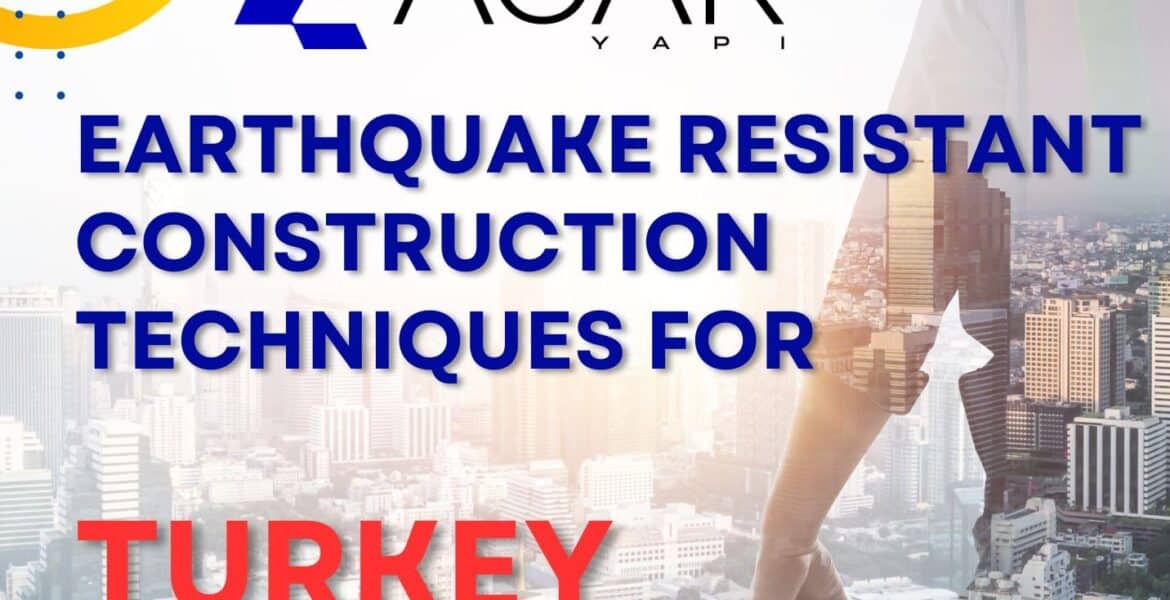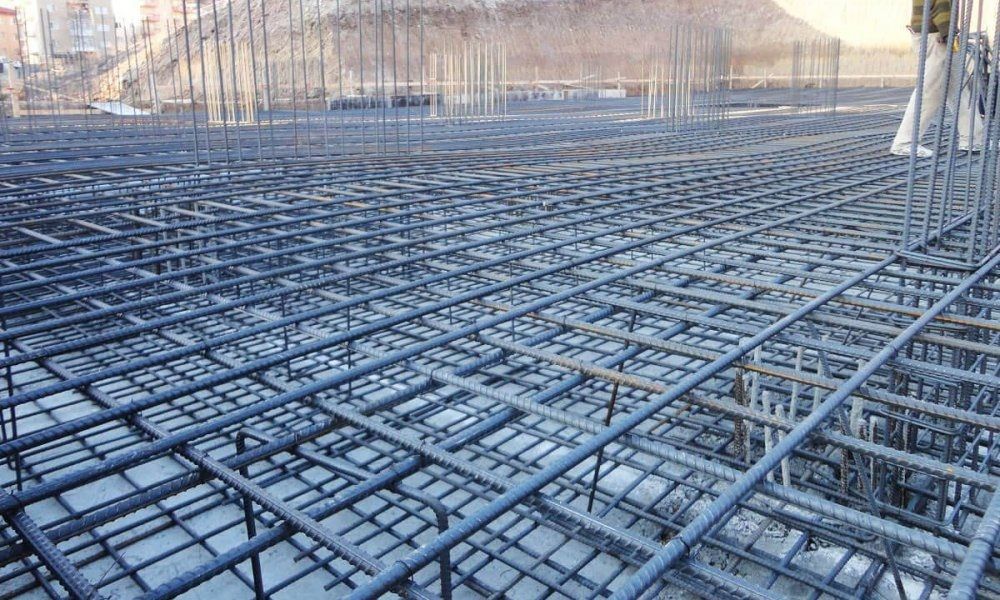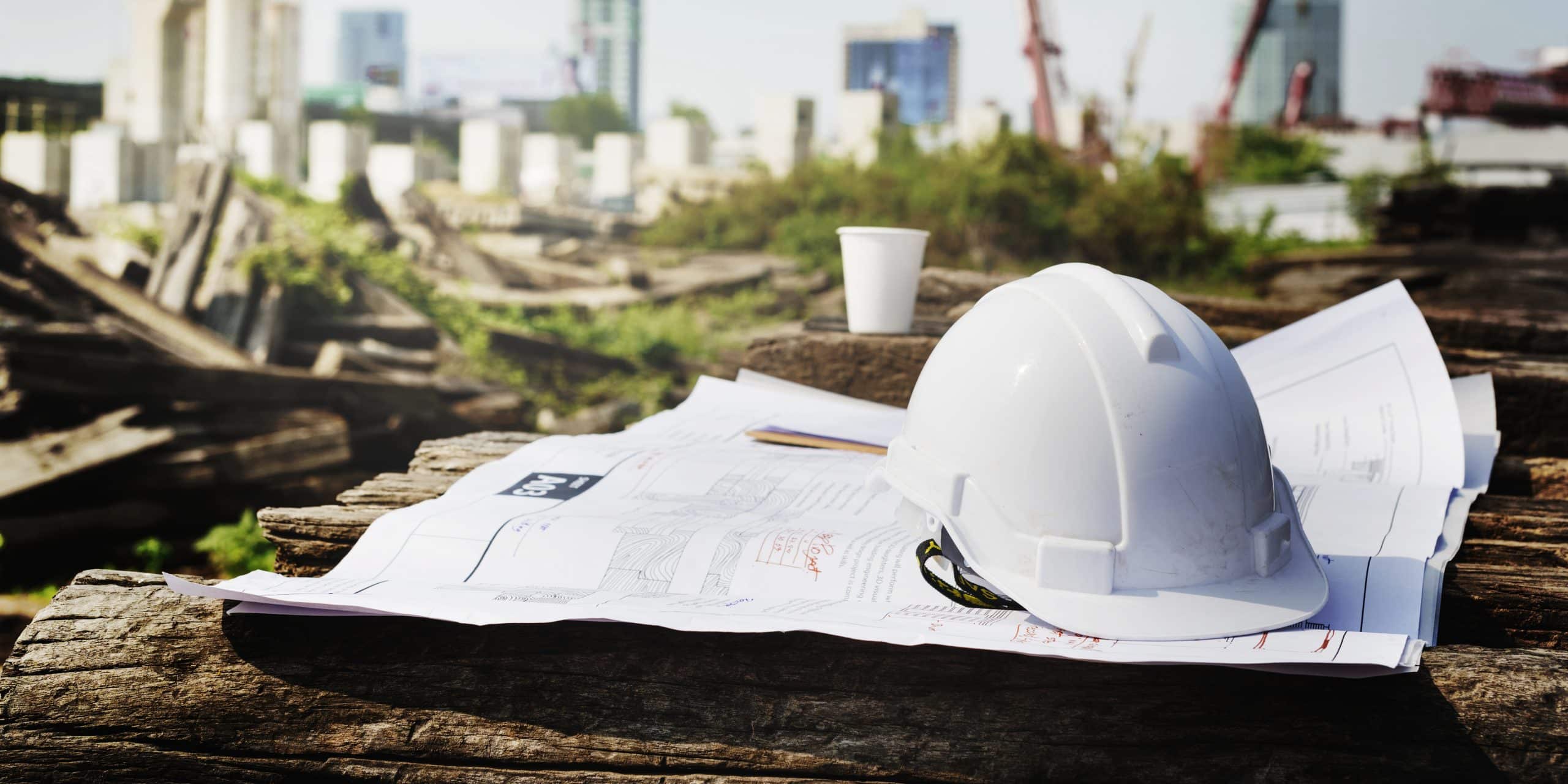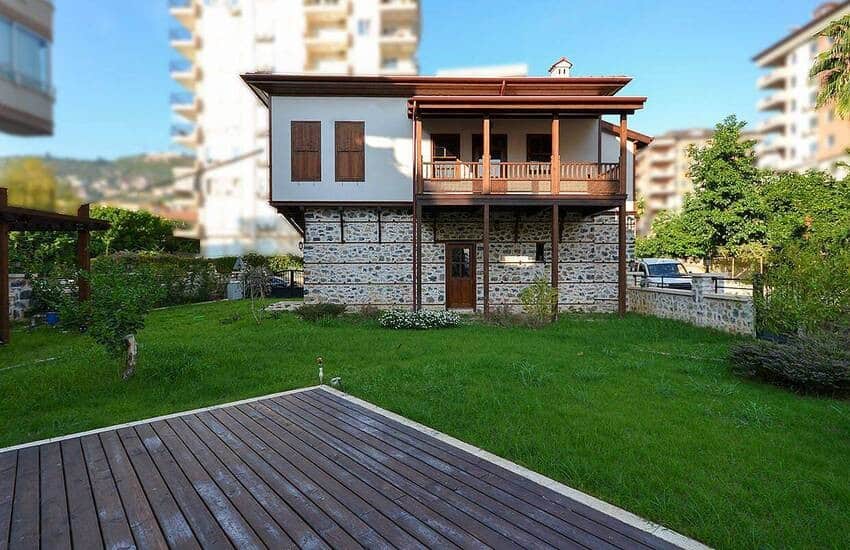Earthquake Resistant Construction Techniques for Turkey
Turkey, which is located at the intersection of Europe and Asia, has a fascinating history, a wide variety of cultures, and stunning natural scenery. The fact that this beautiful country is situated in one of the seismically active areas of the world, however, makes the use of earthquake-resistant construction techniques a top priority. We will look at the many methods used in Turkey to construct structures that can withstand seismic energy, protecting people and property, in this blog article.
Overview of Turkey’s Earthquake Prone Regions
Turkey located on numerous active fault lines, especially the East Anatolian Fault and the North Anatolian Fault, Turkey is prone to earthquakes. Since these geological characteristics cause seismic activity across the nation, it is crucial to use earthquake-resistant construction techniques essential to ensure public safety.

How are Earthquake Resistant Construction Techniques Determined for Turkey?
Seismic activity in Turkey is closely monitored by experts who analyze data to understand the region’s vulnerability to earthquakes. Earthquake-resistant construction techniques are determined based on comprehensive studies that consider historical earthquake data, geophysical surveys, and geotechnical investigations. Which Turkey have experienced 1999 Earthquake was 7.4 magnitude and 2022 was 7.7
Turkey’s Earthquake Resistant Building Codes and Standards
Constructions in Turkey are made according to the zoning regulations approved by the ministry. Before starting the construction as determined in the regulation, a ground report is taken and a raft foundation is applied to make it earthquake resistant. These regulations govern various aspects of construction, such as structural design, material selection, and foundation systems, ensuring buildings can withstand seismic forces.
Site Selection and Geotechnical Considerations
Selecting an appropriate site is the first step in earthquake-resistant construction. You should not build in soft grounds. Reasons for not constructing buildings on soft ground:
- Safety Risk: Buildings on soft ground are more vulnerable to earthquakes and natural disasters, increasing the risk of damage and collapse.
- Subsidence and Compression: Soft ground lacks the capacity to support structures properly, leading to subsidence and compression issues, causing irregular settlement and structural instability.
- Foundation Problems: Constructing foundations on soft ground is challenging due to its low bearing capacity, resulting in potential shifting and cracking of the buildings.
- Structural Damages: Buildings on soft ground are prone to structural damages due to ground movements and seismic activities, leading to costly repairs or even demolition.
- Settlement Issues: Structures on soft ground may experience settlement problems over time, causing tilting, cracking, and compromising structural integrity.
Importance of Robust Foundation Systems in Seismic Zones
In general , avoid building above the fault line , no matter how strong your building is , it will be damaged .
The foundation of a building plays a very important role in its earthquake resistance. Turkey uses a variety of foundation systems, including raft foundations and deep pile foundations, to provide stability and prevent structural collapse during an earthquake.
These are decided according to the results of the ground survey report before starting the construction.
Implementing Reinforced Concrete Foundations
Reinforced concrete foundations are structural components that bear the weight of the building and interact with the ground. During an earthquake, seismic forces act downwards and shake the building, and a strong foundation keeps the structure stable. A wrongly designed or poorly implemented reinforced concrete foundation may inadequately support the building during an earthquake, resulting in cracks, deformations, or even collapse

Using Shear Walls and Cross-Bracing Techniques
Shear walls and cross bracing techniques are commonly used methods to enhance the seismic performance of buildings. These techniques provide resilience to seismic forces and strengthen the structure during earthquakes. Shear walls resist lateral forces, while cross-bracing distributes seismic effects among building elements, ensuring structural stability. These methods make buildings safer and more resilient against earthquakes.
Damping Systems and Base Isolation
Damping systems and base isolation are advanced seismic technologies used in modern construction. Damping systems dissipate seismic energy, while base isolation decouples the building from the ground motion, significantly reducing the impact of earthquakes.
Isolators can be applied to every building. It leads to a 10-20% increase in the overall construction cost, which is easily manageable. Seismic isolators can also be retrofitted to existing buildings, but this process may slightly raise the cost burden. As long as the prevalence of this building technology in our country is demonstrated with good examples, it is a highly significant and secure system.
The buildings of Elbistan State Hospital, Hatay Dörtyol State Hospital, Malatya Maternity and Children’s Hospital stood tall despite two devastating earthquakes. The common feature of these buildings is the use of seismic isolators in their foundations.
Seismic Testing and Simulation
Seismic tests and simulations are important methods used to assess the seismic performance of structures.
In seismic tests, real structures are subjected to earthquake-like loading in a laboratory environment. This allows observing how structures behave under real earthquake conditions and evaluating their performance.
Simulations are conducted through computer-based modeling. Real structures are mathematically modeled, and earthquake loads are simulated to predict the behavior of the structures.
Both methods are essential to understanding the performance of structures during earthquakes and enhance their safety. These studies are used to design earthquake-resistant structures and strengthen existing ones against seismic forces.
Benefits of Collaboration with Seismic Engineering Experts
Collaborating with seismic engineering experts is crucial for achieving the highest level of earthquake resistance.
- Earthquake-resistant structure: Seismic engineering experts have the expertise to enhance the safety of buildings against earthquakes. Correct design and implementation protect structures from earthquake damages.
- Optimized Design: Experts provide designs optimized to withstand earthquake loads, ensuring efficiency in material usage and cost-effectiveness.
- Compliance with Local Regulations: Seismic engineering experts design buildings in accordance with local earthquake codes and standards, ensuring compliance with legal requirements.
- Experience and Knowledge Sharing: Experts share their extensive experience and knowledge with project teams, contributing to better decision-making and successful project completion.
- Cost and Time Savings: Collaboration helps deliver projects on time and within budget. Experts ensure efficiency in structural design and analysis, resulting in cost and time savings.
Frequently Asked Questions (FAQs)
Does Turkey have earthquake-proof buildings?
Yes, there are earthquake-resistant buildings in Turkey. Turkey is a country with a high earthquake risk, so there is a focus on constructing a significant portion of buildings to be earthquake-resistant. Buildings constructed in compliance with current earthquake regulations and construction standards are made more resilient and safer against earthquake effects. Earthquake-resistant buildings contribute to reducing structural damage and preventing loss of life during earthquakes.
Why did so many buildings collapse in Turkey during past earthquakes?
The main reasons for buildings collapsing during earthquakes can be summarized as follows:
Soil Problem: Earthquakes cause the ground to shake simultaneously. Strong forces can quickly turn soft soil into loose sand, leading to the risk of landslides.
Foundation Problem: Buildings can collapse during earthquakes if their foundations cannot withstand the forces.
Building Materials: The durability of a building depends on the materials used. Concrete buildings, being more rigid, may be less prone to collapse compared to wooden ones.
For the safety of buildings during earthquakes, it is important to choose suitable ground, have a proper foundation design, and use sturdy construction materials.
Can existing luxury villas in Turkey be retrofitted to become earthquake-resistant?
Yes, existing luxury villas in Turkey can be retrofitted with earthquake-resistant techniques. Engineers can conduct structural assessments and implement necessary upgrades to enhance their earthquake resilience.
Earthquake-resistant construction techniques are of utmost importance in Turkey due to its high seismic activity. The implementation of stringent building codes, robust foundation systems, reinforced concrete, shear walls, and advanced seismic technologies has significantly improved the country’s resilience to earthquakes. Collaborating with seismic engineering experts ensures that Turkey continues to develop safer and more disaster-proof homes. By investing in earthquake-resistant construction, Turkey remains steadfast in protecting its people and preserving its architectural heritage.
Check other blogs too :
Villa Rough Construction Cost in Turkey: Understanding and Examples













